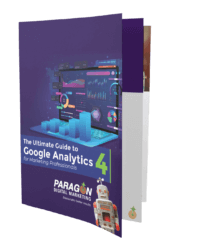5 Tips to Streamline your Content Marketing Strategy in 2018
Happy 2018!
With every new year comes a new opportunity to reach prospective customers. What do you need to do now to improve your content marketing strategy for 2018?
In this post, we’ll share the most important things you can do for your business to improve and simplify your content marketing. The tips we’ll discuss below can be applied to a wide range of content, including:
- Articles
- Blogs
- Case studies
- Ebooks
- Forum answers
- Guides
- Infographics
- Podcasts
- Webinars
- White papers
- Etc.
Let’s get started
Review Your Previous Content Marketing Efforts

Before beginning to streamline your content marketing, look at what you’ve done so far. What has worked? What hasn’t worked as well as you hoped? Answer the following questions:
- What were the end goals for your previous content strategy?
- How often did you produce new content?
- Is there a way to improve your method of producing content?
- Which forms of content were the most popular? (Blog posts, videos, ebooks, etc.)
- What was your most popular content across the board?
- Which calls to action were the most productive?
- Did your target audience change?
Take a close and objective look at your previous content marketing strategy to determine what you should keep and what may need to be abandoned moving forward. Remember that you can also make adjustments as you go. A content marketing strategy should always be flexible.
1. Look At Your Year In Advance

In order to streamline your content marketing strategy, it’s important to look at it as a whole. What’s the big picture? What are your ultimate goals?
You may have multiple goals (generate leads, build brand awareness, grow your email list). If you do, make sure that you have enough content to accomplish these goals. It’s also important that every piece of content you produce this year has a clear and single goal.
To do that, think of your strategy from the big picture instead of the small picture. A small picture view is when you consider each individual blog post one at a time. The end result is a disjointed blog that doesn’t effectively move customers down the funnel.
On the other hand, a big picture view is when you consider your end goal and then work backward to create a blog calendar that supports that goal.
When mapping out your content strategy, consider the following best practices:
- Speak directly to each of your customer personas
- Create content for each level of the funnel
- Choose a day to publish your content each week/ month and be consistent
- Focus on quality over quantity — If you can only post twice a month, it’s better than half-heartedly posting twice a week.
2. Create a Content Production Schedule
As we touched on above, it’s crucial that you produce content on a consistent basis. Sporadically publishing content will undermine your efforts to cultivate a community. People who subscribe to your blog or email list will end up forgetting about you if you don’t communicate on a consistent basis. When they eventually do hear from you, they’re much more likely to unsubscribe because they don’t remember you or signing up for your list.
Make a schedule for when you can produce and distribute your content. Be realistic for yourself. Take into account the size of your content team. Also consider the amount of time and other resources that you’re able to invest in production and distribution.
When scheduling your content, keep these thoughts in mind:
- Set aside a time to brainstorm ideas. You can brainstorm for a month in advance or you can plan for the entire year.
- Outline your post ideas. What will you discuss in each blog post? Make a plan so that you can avoid overlapping ideas in multiple posts.
- Write the posts. Consider tackling an entire month’s worth of posts in one week. This will free you up to edit and schedule posts later.
- Edit the posts. Proofread and check your grammar.
- Schedule a time to publish your posts.
- Schedule a time to promote your posts on social media.
- Write and schedule a newsletter about your blog posts.
3. Personalize Content
The most important content marketing trend of 2018 is personalization. To be honest, this has been an ongoing trend, but personalization has become even more essential for businesses. To effectively reach your audience, you must be able to create content that connects with each individual as directly as possible. Generic content is no longer acceptable. Your content should acknowledge who you’re speaking to and address their individual pain points.
In content marketing, there are three different ways to personalize your content:
Create content for different stages of the funnel
Every person who views your content exists in one stage of the sales funnel. Whether that person is completely unfamiliar with your business or they’re a loyal customer, you need to create content that reaches them. The good news is that you can draft blog posts and other content to meet your audience, no matter where they are– from consideration to delight.
To do so, map out your customer’s journey and then create content for each important milestone. This content should guide the customer to the next stage in their journey.
Create content for different personas
In addition to focusing on the customer’s journey, also consider the different types of customers you cater to. What are their demographics? What are their pain points? How can you create content that addresses them in a more direct way?
Focus on your email marketing game
Email offers another opportunity to personalize your content. You can create segments in your email list to speak to the aforementioned different personas and different funnel stages. You can also create content based on your email subscriber’s behavior.
For those in the consideration phase, it may be helpful to send a case study. For those who have recently purchased from you, an onboarding series of emails may be most useful.
4. Hire a Dedicated Content Writer for Your Business
Have you considered hiring a content writer for your business?
Most businesses simply use a member of their staff to create content. While most people can write, not everyone is a content writer. By hiring a dedicated content writer, you can gain these benefits:
- Free your staff to do what you originally hired them to do
- Prioritize your content so that you have a greater chance of marketing success
- Increase your sales and generate more leads when using an experienced content writer.
- A content writer will also research your audience and create content to engage them
5. Refresh Old Posts and Repurpose Your Content
Look for opportunities to refresh and repurpose old content. This is one of the most overlooked ways to bolster your content marketing strategy. Let’s explore how you can do it:
Step 1: Refresh Old Posts
Take a look at your most popular posts. If you have a Google Analytics tracking code installed on your computer, it’s easy to determine your most popular posts.
Once you’ve identified your top posts, follow this checklist:
- Is the information on the post still relevant and up to date?
- Is the post at least 1000 words in length? (Longer posts perform better in search engines)
- Have you checked the post for spelling, grammatical errors, or awkward phrase?
- Can you add or update any images or screenshots in the post?
- Have you included keyword-rich alt text for your images?
- Can you include different multimedia components in your posts? (Videos, slideshares, infographics, audio files)
- Have you checked for and removed any broken links?
- Have you added internal links in your blog posts to other related content on your blog?
- Have you optimized your blog posts for search engines?
- Have you included a call to action at the end of each post? (Read these related posts, sign up for our newsletter, buy this product)
- Have you promoted the posts on social media? If you have, do it again.
- Have you responded to any and all comments on these posts?
Step 2: Repurpose Your Content
In addition to refreshing your popular blog posts, you should also look for different ways to repurpose them. This extends the life of your posts and maximizes your investment.
Here are a few ideas on how to repurpose your blog posts:
- Turn your posts into videos
- Create an eBook on the same topic
- Convert your blog post into a workbook
- Turn the post into a social media-friendly infographic.
- Produce a webinar related to the topic
- Develop a podcast series
- Present a slideshare
That’s just the beginning. Depending on the unique needs of your audience, you can produce different types of content from your most popular posts. Take your cues from your top requests.
Final Thoughts
Remember that content marketing is long-term strategy. Even when you streamline the bloat and focus on what really matters, you’ll still need to be patient to see the fruits of your labor. The good news is that if you don’t give up, you will improve your marketing reach and boost your bottom line. Use these tips to create a strong content marketing strategy for 2018 and beyond.












